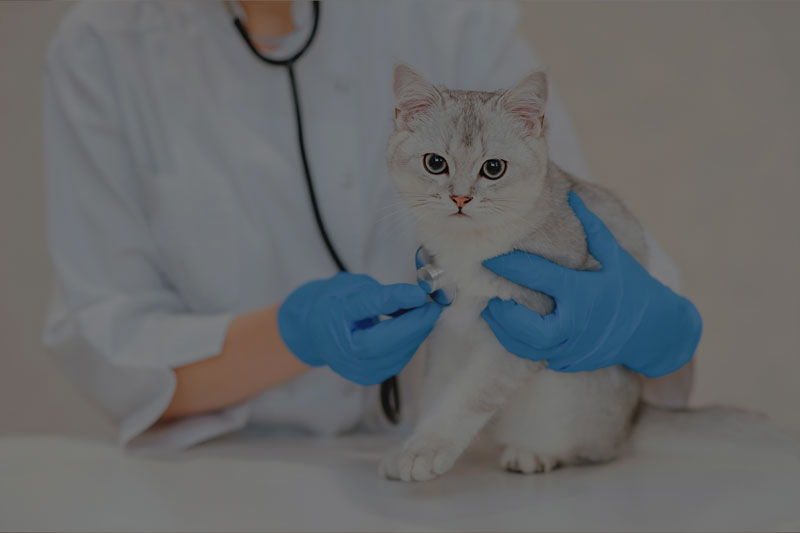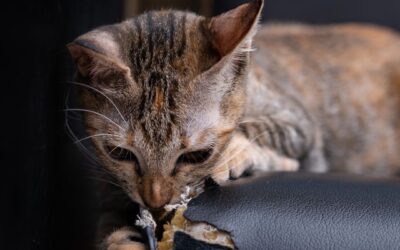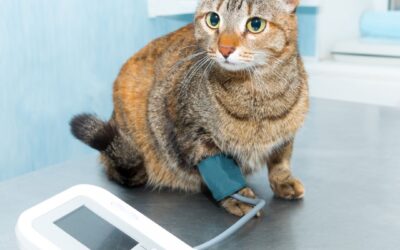Usually, older and middle-aged cats suffer from CKD (Chronic Kidney Disease) where kidneys are unable to filter toxins from the blood. Symptoms like dehydration, excess thirst, diarrhea, loss of appetite, weight loss, bad breath, and bloody or cloudy urine are red flags. If you observe these symptoms, consult your vet immediately. A urinalysis test and blood pressure check-up by a vet can detect early-stage kidney disease in cats.
Two types of kidney diseases in cats:
Acute Kidney Disease
- It is a short-term disease that can be reversed in some cases if diagnosed early.
- It may occur when a cat consumes something toxic, like anti-freeze, Easter lilies, pesticides, and certain human medications.
- It may be caused due to kidney infection, trauma, dehydration, urethral blockages, and organ failure.
Chronic Kidney Disease
- Chronic Kidney Disease in cats may occur due to advanced dental disease, stress, high blood pressure, thyroid problems, cancer, prolonged kidney infections, blockages, and inherited diseases like polycystic kidney disease.
- CKD in cats is irreversible.
This article provides information on the common signs of CKD in cats, how CKD in cats can be diagnosed, how post-diagnosis care should be provided, and ways to prevent CKD in cats.
How common is a chronic kidney disease in cats?
CKD is seen thrice more frequently in cats than in dogs. CKD is mostly a progressive disease, so even if it can be seen in cats of any age, it worsens over time and thus affects older cats often. Around 20-50% of cats over 15 years of age will have some degree of CKD present.
Symptoms of CKD in cats
In the initial stages of kidney disease, cats are often thirsty and urinate frequently. But cat parents may not be able to spot these symptoms. As the kidney disease progresses, the following symptoms may be noticed
- Vomiting
- Increased thirst
- Reduced appetite
- Weight loss
- Lethargy
- Dehydration
- Bloody cloudy urine
- Mouth ulcers on gums and tongue
- Bad breath with an ammonia-like odour
- Constipation
- A dry coat
- Anemia
What happens if CKD in cats progresses?
Tiny filtration units called nephrons in the cat’s kidneys remove toxins from the blood through urine. As CKD progresses, the nephrons deteriorate and do not clean the blood adequately. Accumulation of toxins in the cat’s body may lead to health hazards.
How to treat CKD in cats?
There is no cure for CKD in cats, but early diagnosis and a good treatment may make life better for your feline friend. Cat parents must consult their vet in this case.
A vet will conduct blood tests, urinalysis, X-rays, ultrasound, or biopsy tests. Regular medical check-ups may also help. The vet may advise surgery, administer fluids intravenously, and put the cat on a special diet or medications if CKD is diagnosed.
What care should be taken by a cat parent when CKD is detected?
Ensure optimum hydration: You may notice a decrease in water intake by your cat, and this may lead to dehydration. Encourage your cat to drink water by placing water bowls at different places in the house. This may be helpful for cats with arthritis. Canned food should be given to cats as it contains more water content than dry food. You may use water fountains to encourage your feline friend to consume more water. Additional fluids may be administered by a vet intravenously for seriously unwell cats.
Diet Management: A cat with CKD should be given a diet that is low in phosphorus, protein, and sodium content. This will lower the level of waste products in the cat’s bloodstream.
Foods to avoid: Avoid giving cheese, bread, and deli meat to your cat as they have high salt (sodium content). Tuna is high in phosphorus, so it is not good for cats with CKD. Avoid adding spices and too much salt to your cat’s diet. Bone broth has high-protein content and, therefore, should be avoided.
Safe foods: Talk to your vet before making any dietary changes to your cat’s diet. The calorie requirement and overall diet should be designed only after consulting a vet.
For carbohydrates and fiber, give your cat – brown rice and quinoa. Legumes, beans, spinach, and kale can be given for proteins, and Vitamin B. Turkey and chicken are safe protein options for your cat. For essential fatty acids, musk melon, fish oil capsules, broccoli, and cauliflower may be added to your cat’s diet. Fish oil lowers blood pressure and reduces kidney inflammation. Feed your cat fruits like watermelon, apples, bananas, green beans, carrots, broccoli, zucchini, and blueberries. Feed non-fat yogurt to prevent stomach-related issues.
Monitor your cat’s litter box habits: Encourage your cat to urinate regularly and keep an extra litter box for your cat. If you observe blood in the urine, excessive urination, or your cat vocalizing while in the litter box, talk to your vet immediately. Monitoring your cat’s litter habits may help in the early detection of CKD.
If your cat is an adult, take them for routine wellness check-ups to a vet. If your meow pal is over 7 years old, a biannual check-up is necessary. If a diagnosis of CKD is done early, cats may survive for an average of 3 years.
Diagnosis of CKD can be saddening for a cat parent. However, you need to be strong. Be compassionate towards your feline companion during this difficult time. Hydration, nutrition, medication, and compassion will slow down the progression of CKD in cats and lengthen their life.





0 Comments